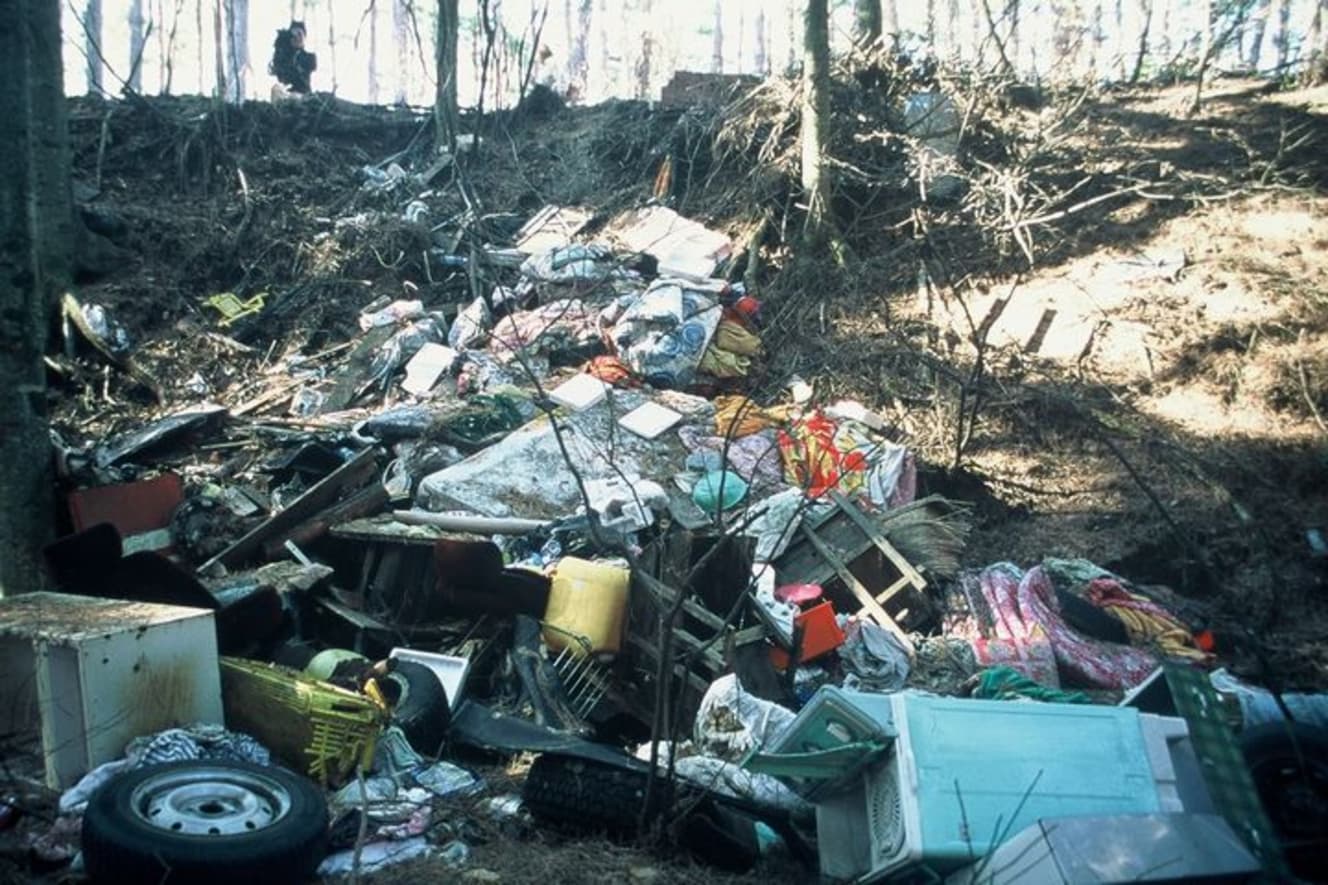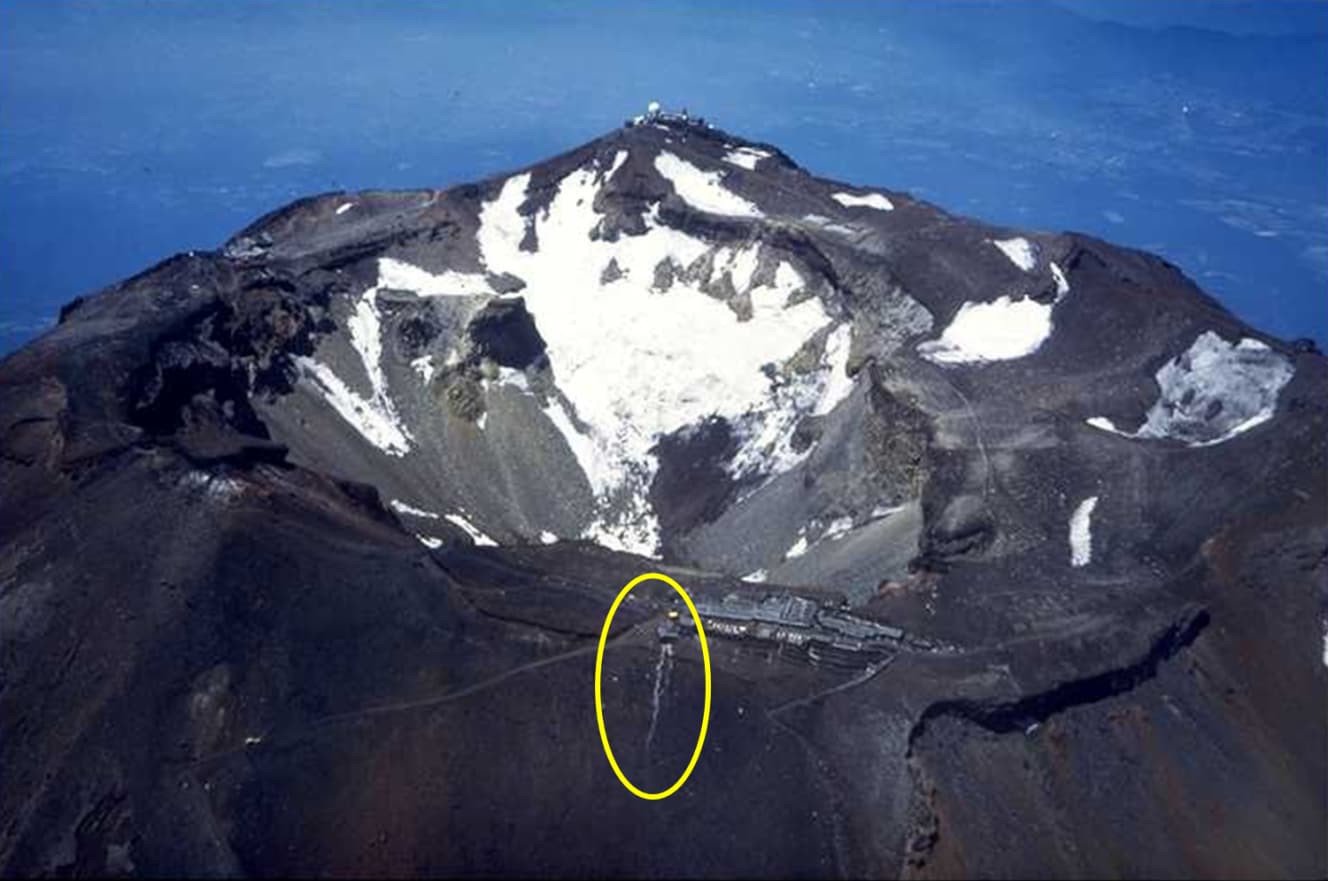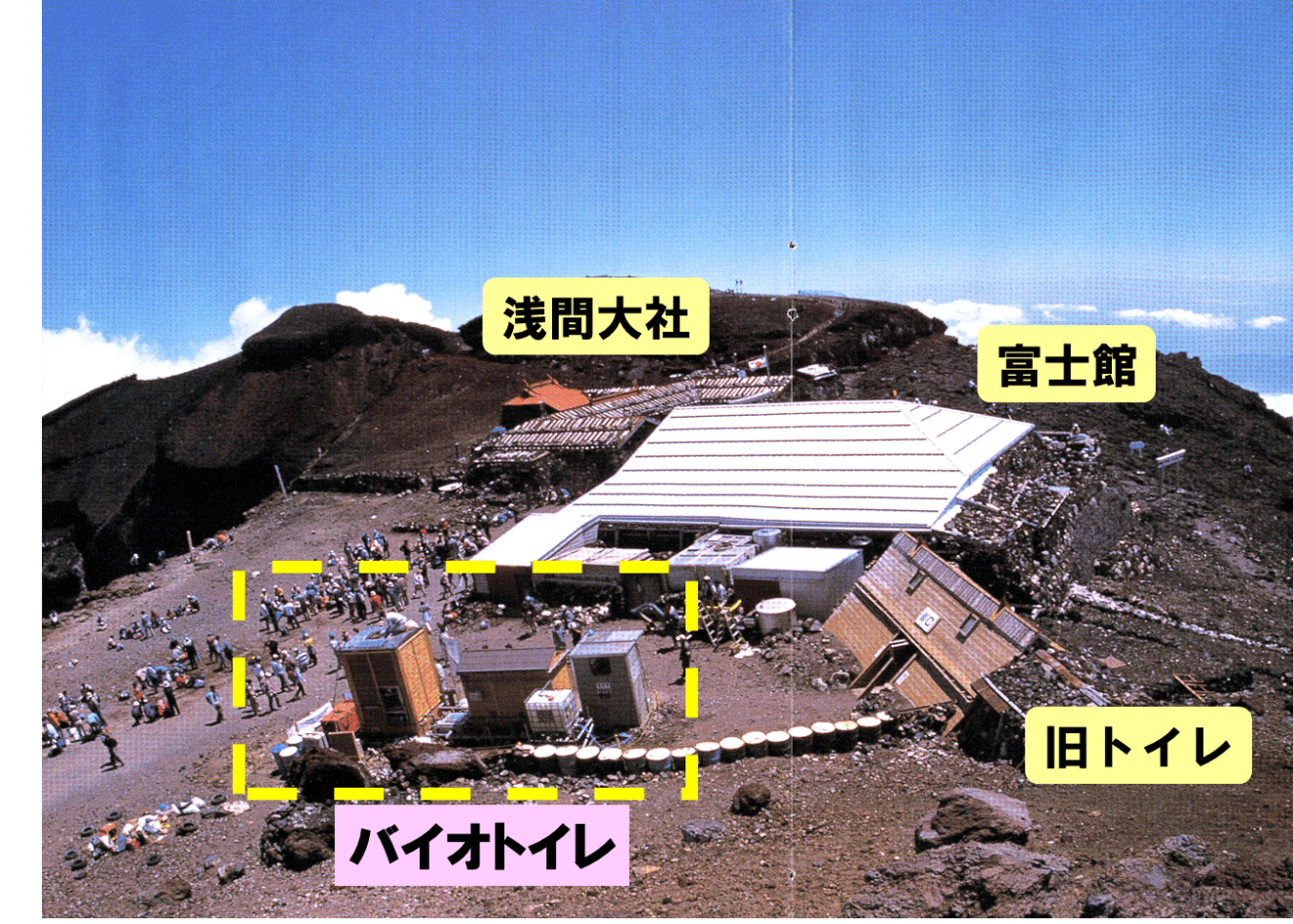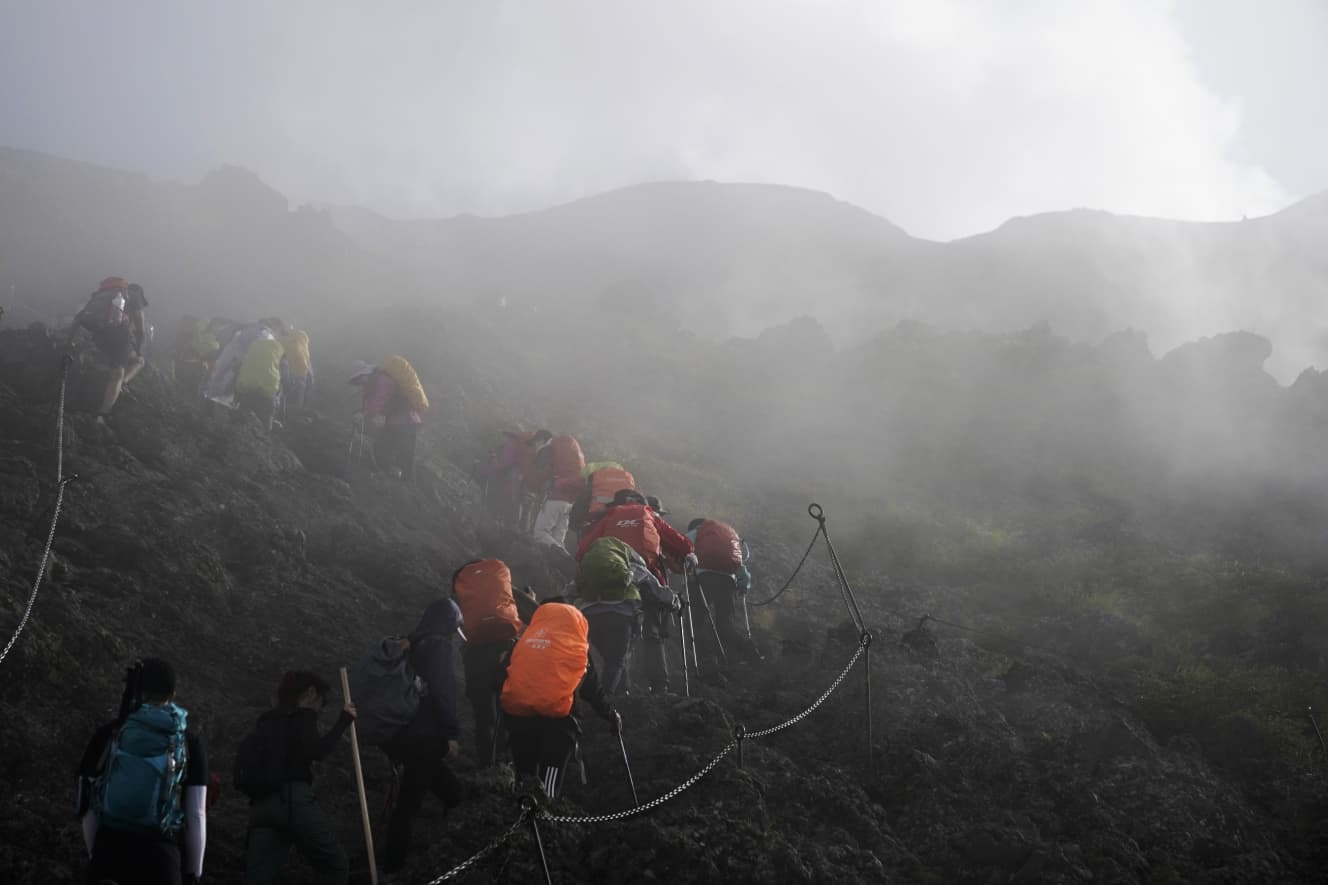Dripping urine on God’s mountain. Stove-piped government, stopgap measures… “Mt. Fuji is breaking down” because of the same problems as those in Japan.
Accurate survey of the number of climbers” has never been conducted before… Dangerous conditions are the norm.
Fuji is a disorderly and dangerous mountain. Fuji is a disorderly and dangerous mountain, a lawless zone with inadequate administrative control.
The first thing he said in anger was Toyohiro Watanabe, who taught “Fujiyama Studies” at Tsuru Bunka University.
Fuji. Because of the flatness of the terrain, on Saturdays and Sundays during the first week of August, as many as 10,000 to nearly 12,000 climbers gather at this spot.
The situation then becomes as dense as a packed train that cannot even sit on the ground.”
On August 9, Yamanashi Prefecture announced that it would impose restrictions on climbing starting on August 11 if it determines that too many people have gathered on the trail and that there is a risk of falls or falling rocks. In the past, the prefecture has stated that if the number of climbers exceeds 4,000, climbing restrictions will be imposed around the 8th station, but such numbers have been far exceeded and dangerous conditions have become the norm, unable to protect climbers’ lives. However, no climbing restrictions have ever been enforced.
In order to impose mountaineering restrictions, a clear rationale and investigation is required. To do so, we need an accurate survey of the number of climbers, how many people climbed the mountain every day during the two months from July to August, by time, gender, age, country, and other items, and to understand the various trends of climbers. Without the accumulation of data on the number of climbers over time, it is impossible to properly control the number of climbers.
However, this too has never been implemented.”
Mr. Watanabe speculates that the reason this has not been done is because “mountain lodges” refuse to provide accurate numbers of climbers, citing personal information as a problem, and that if the number of guests were known, the revenues of the lodges would also be known in detail.
The number of climbers on Mt. Fuji announced each year is based on a survey conducted by the Ministry of the Environment, which installed infrared counters near the eighth station on each trail, and averages about 250,000 climbers, but the number cannot be evaluated as accurate due to many missing and broken data.

Toilet paper clings to the surface of the mountain like a “white river”…
Fuji was registered as a World Heritage site on June 22, 2001. At that time, experts from the International Council on Monuments and Sites (ICOMOS), an advisory body to the United Nations Educational, Scientific and Cultural Organization (UNESCO), visited Mt. Fuji was approved for registration, but at the World Heritage Committee meeting in Cambodia, many orders were given by ICOMOS.
There was a 20-minute presentation on Mt. Fuji. For five minutes of that time, I praised Mt. But for the remaining 15 minutes, he made very harsh remarks, showing pictures of embarrassing scenes of garbage left behind, urine dripping, and so on.”


Icomos has given us homework assignments such as “drastically review the comprehensive conservation plan prepared by the national and prefectural governments,” “consider and implement restrictions on entry to the mountain,” “develop mountain trails as pilgrimage routes for the faith of Mt. Fuji,” and “implement control measures against development of the Fuji Five Lakes and other areas,” etc., and we will be able to make a decision on these issues before the ’16 Fuji,” and “take measures to control the development of the Five Lakes of Fuji and other areas.” They were asked to submit a “conservation status report” on these matters before the World Heritage Committee meeting in 2004.
What does it mean to “pour urine into Mt.
There are 42 mountain lodges with attached toilets at the fifth station and above. During the summer months, the urine is stored and when the mountain is closed, it is poured down the slope to be used in an empty state in the following year. As a result, the toilet paper has been left behind on the mountainside for kilometers, leaving a “white river” of toilet paper.


Concerned about these problems of environmental damage, it was not the national or prefectural government that moved to solve the problem.
In 2001, the NPO “Mt. Fuji Club,” of which Mr. Watanabe was the executive director, in cooperation with the NPO “Groundwork Mishima,” citizen volunteers, and a company that manufactures environmental bio-toilets, first installed bio-toilets atop Mt.
However, now, more than 20 years after its installation, there is widespread concern that the bio-toilets are not keeping up with processing due to their declining functionality, and that urine is now dripping from the mountain lodge toilets, just as in the past.
What on earth has the government been doing? What happened to the “conservation status report” that was required to be submitted by ICOMOS?
In the report submitted by Japan, we stated that we would evaluate the actual number of climbers and the normalization of the situation, consider regulations on private cars, investigate the actual conditions of lodgings at mountain lodges, and study the issue of cooperation fees. Icomos agreed with that.
But what is the reality? The number of reckless and bulletproof climbs is increasing, the danger level is rising, and no concrete measures can be found at all. There are no handrails on the trail, and there are dangerous places along the way where climbers must hold on to chains. There is no maintenance at all for safe climbing.
The administration explains that “entrance fees” cannot be collected because it would be unfair…
What about overseas? Yosemite National Park in the United States is also registered as a World Natural Heritage site. It is twice the size of Tokyo! Even in such a large place, entry to the mountain is restricted, with only 11,550 people allowed in per day. To enter the mountain, visitors must pay an entrance fee of $35 per vehicle.
When you pay the entrance fee, you are given a mountain entry card, and if you do not have it with you when asked to show it inside the park, you will be arrested and fined.
Yosemite National Park is not the only park with this system. It is not only in Yosemite National Park, but also in Tongariro National Park, a World Heritage Site in New Zealand, and other places in other countries.
There are two main reasons for registering a site as a World Heritage Site: one is to deter development by accepting restrictions based on global standards. The other is to implement strict environmental protection measures by international environmental standards.
We must demonstrate our resolve to protect and preserve the world-class beauty and safety of Mt.
Watanabe has visited Tongariro National Park nearly 10 times, and each time he goes, he finds that the trails have been improved, railings built, disaster shelters constructed, and mountain huts made more comfortable.

In Tongariro National Park, the lodge and golf course are taxed 6% of their sales, and the ski resort is taxed 15%. That secures a fund of 200 million yen per year. We use the money to build a sewage treatment plant and transport and treat human waste by helicopter to the sewage treatment plant.
Is that the “world standard”? When I think about it, it seems strange that Mt. Can’t they at least charge an entrance fee?
I am sure they could if they wanted to. Many climbers climb from the fifth station, so we could collect the fee there.
Fuji, but there are four climbing routes, and some climbers come from other places. Therefore, the government cannot collect from those who climb from other routes. The administration explains that they cannot collect the fees because it would be unfair.
They should just fine people who do not have a mountain pass, as Yosemite National Park does.
It’s a fact of negligence caused by the stove-piped administration and the deadbeat administration that wants to do its job as little as possible.”
Fuji is the worst mountain in the world” and “It does not deserve to be a World Heritage site.
The management system of Mt. Fuji is complicated: the area from the 8th station up is within the precincts of the Fuji Sengen Taisha shrine, while the area up to the 8th station is divided between Yamanashi and Shizuoka prefectures, involving two prefectures and 10 municipalities. In addition, there is the Agency for Cultural Affairs of the Ministry of Education, Culture, Sports, Science and Technology because the area is a World Cultural Heritage site, the Ministry of the Environment because it is a national park and is subject to the Nature Conservation Law, the Ministry of Defense because the Higashi and Kita Fuji training grounds are located there, the Forestry Agency of the Ministry of Agriculture, Forestry and Fisheries for the national forest on the Shizuoka Prefecture side, and many other agencies are intertwined in a web of government agencies.
When it came time to install the bio-toilets, they had to obtain permission from as many as 21 government agencies and related organizations.
In other countries, they have created a “Nature Conservation Bureau” to centrally manage national parks. I think Japan should create a cross-ministry organization called the “Mt. Fuji Agency” and enact the “Mt.
Fuji is a mountain of faith, a mountain of art painted by Katsushika Hokusai and Utagawa Hiroshige, and a treasure trove of nature with world-class forests below the fifth station and a flora that changes from one flora to another as you climb. It is a treasure of Japan and a treasure of the world,” Watanabe said.
Why did they apply for World Heritage status? Now I can only think it was a performance by politicians.
Mr. Watanabe’s anger is growing more and more intense.

Yamanashi Prefecture is now considering the Mt. Fuji Mountain Railway Concept, which aims to run a railroad on Mt. The expected annual number of users is 3 million. What are they going to do by sending more people to Mt. Fuji and making it a tourist mountain?
Fuji with rangers from Yosemite and Tongariro National Parks. They were appalled by the disorder and lawlessness of the mountain, and both told us that Mt. Fuji was the worst mountain in the world and that it did not deserve to be a World Heritage site.
No matter how hard we, as a citizens’ group, try, we can’t enact any laws, we don’t have the authority to implement a new conservation system, and we are stuck in a state of helplessness.
If that is the case, why don’t we just build a mountain railroad, seriously damage Mt. Fuji, cause environmental destruction, and get bashed by the rest of the world? Fuji and cause environmental destruction, and then maybe the government will think about it.
Fuji is crying right now,” Watanabe said. Will Mt. Fuji continue to be a “legacy of shame” in the world?
Toyohiro Watanabe After graduating from the Faculty of Agriculture at Tokyo University of Agriculture and Technology, he joined the Shizuoka Prefectural Government, where he was in charge of agricultural infrastructure projects, etc. He received his PhD in Agriculture in 2007 and served as a professor in the Department of Sociology, Faculty of Letters, Tsuru Bunka University from 2008 to ’15 and as a specially appointed professor until ’20. Currently, he has held the position of Executive Director of four NPOs, including Groundwork Mishima. He teaches courses on civic activism and Mt. He is a pioneer in the role of “community development producer” who initiates community development and waterfront revitalization. Author of “Light and Shadow of Mt.
Interview and text by: Izumi Nakagawa